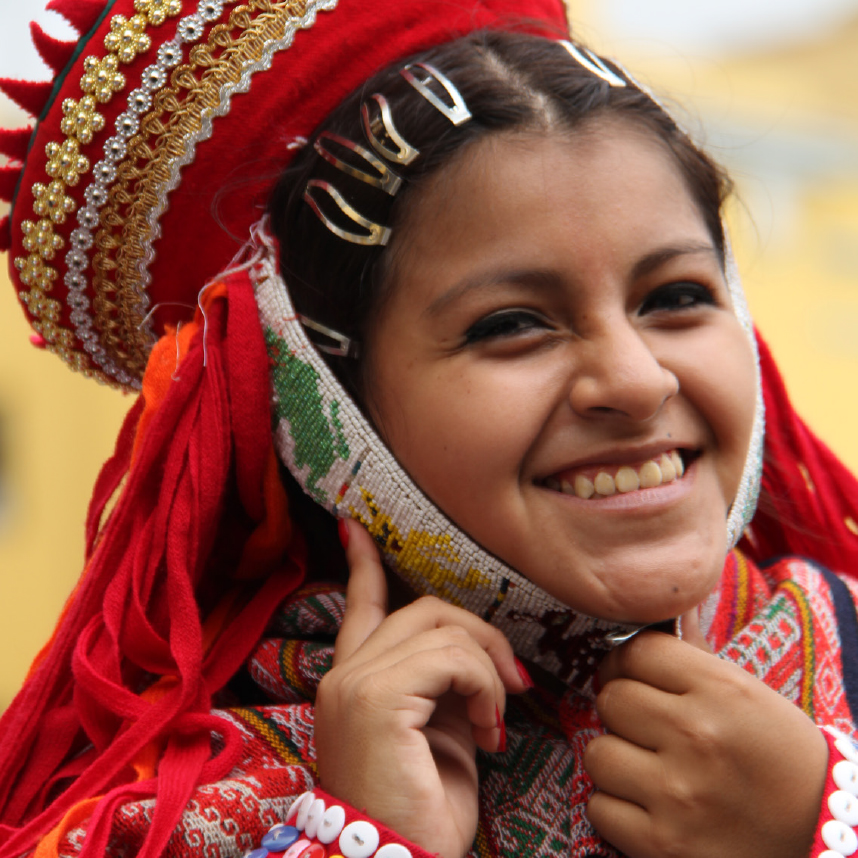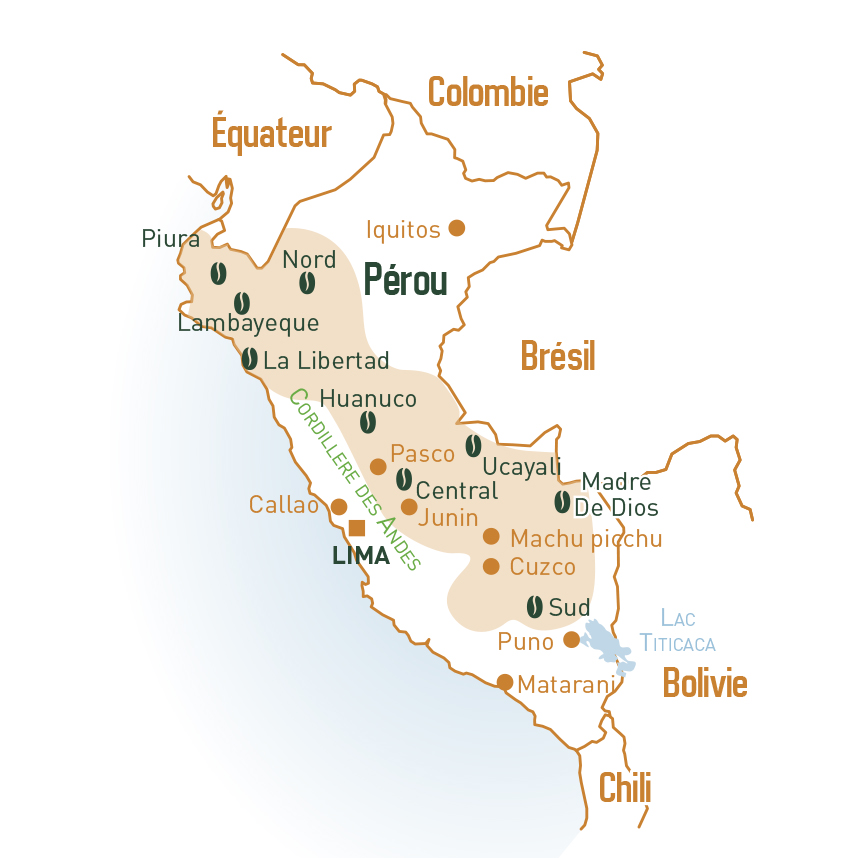
Peru
Type: Arabica
Processing: Washed
Classification: SHG
Notes: The climatic and topographical diversity confers an intense and unique aroma, against the backdrop of the Amazon, blending the scents of spices and toasted cereals.
Background
It’s no exaggeration to say that coffee has a cult status in Peru. As the main export product of the country's agrifood sector, what Peruvians call green gold, coffee has become an essential economic resource for a country that has long suffered from drug traffickers. A driver of both social and environmental growth, the impressive rise of coffee is especially due to a judicious diversification policy led by producers. Peruvian coffee farmers made a successful strategic decision by focusing on niche markets, which are both very promising and more profitable. This desire to produce “differentiated coffees” caused a leap in quality, which made it possible to use valuable labels: small producers, ethical, sustainable, organic, etc.
The San Martin region is a shining example of Peruvian coffee’s new momentum. In a place where drug traffickers once thrived, coffee farming has now almost entirely replaced the production of coca. Support from United Nations programs aimed at eradicating drug production played an essential role in this achievement. We can therefore say, as Peruvians readily do, that Oro Verde coffee does good things, both to those who drink it and for those who produce it.
Geography
The diverse landscapes and climates of this South American country have resulted in a remarkably diverse flora and fauna.
Coffee production sites are found in the mountains, along the Pacific coast or sheltered by the shade of the country’s many forests.
The technique of polyculture, practiced under the forest canopy, is caring and respectful of the ecosystem, enabling coffee plants to flourish in harmony.

Crop information
Species:
Arabica
Varieties:
Arabigo, Typica, Bourbon, Pache, Caturra, Catimor / Hybrid.
Altitude:
From 500 to 2 000 m
Harvest:
• Washed: April / September.
• Dry: June / October.
Sorting:
• Mechanically
• Electronically
• By hand
According to customer taste, and cost.
First shipment:
July.
Processing:
• Mainly washed
• Dry
Quality:
Washed: good acidity, excellent body, mild in the cup, blue-green, high quality bean.
Average caffeine content:
1.20%
Economy
Peru mainly produces cotton, wheat, maize, rice, sugar cane and barley.
Coffee farming only uses 6% of the country's agricultural land, and the country’s 160 000 small producers manage farms of 10 hectares on average. Organised in cooperatives for the most part, these small producers can more easily manage and deal with the various problems inherent to this type of activity. It also gives them a better quality of life and a higher income for themselves and their families.
In 2003, the Centrale du Café was created, which brings together many cooperatives in southern and central Peru. Almost entirely organic, Peruvian coffee is a perfect match for Fairtrade shops, where its remarkable characteristics ensure its place among the best coffees.